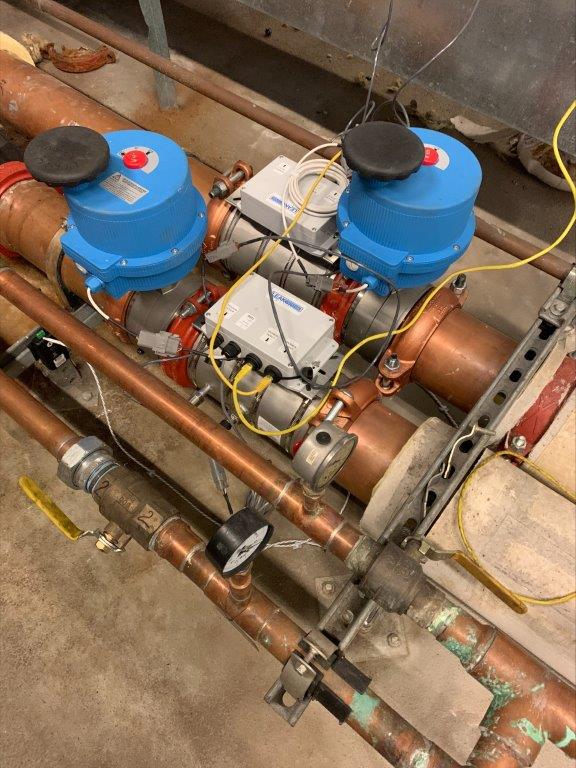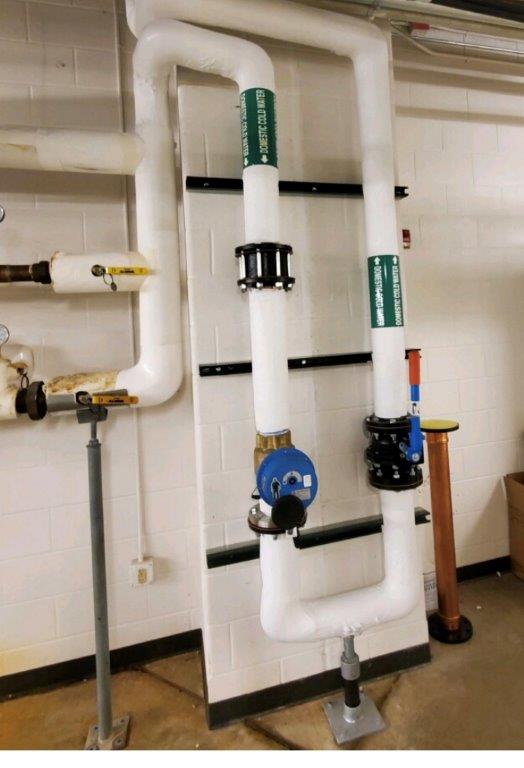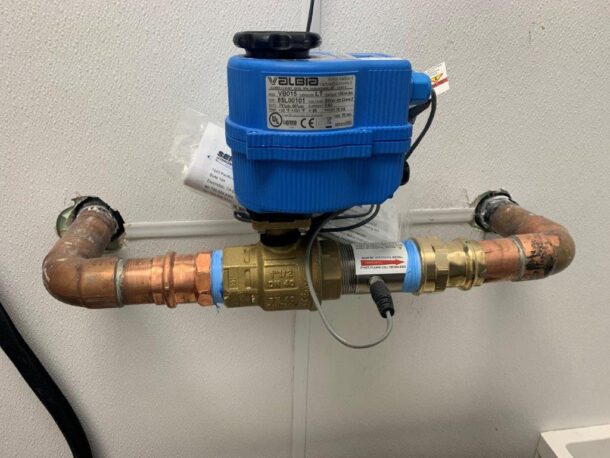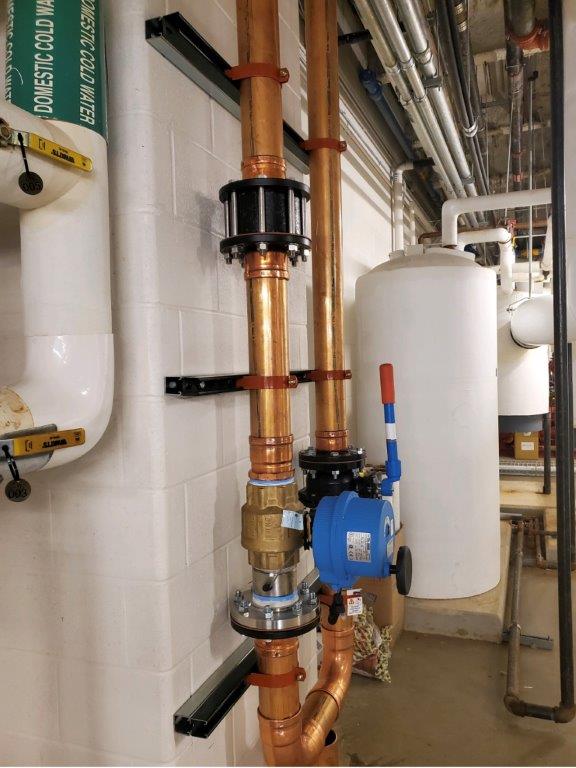According to the EPA, residential leaks—not including commercial water leakage in this country—wastes nearly 1 trillion gallons of water annually.
It’s a widespread problem. Not long ago, Washington Post journalists wrote about a guy, Sam, who went to his rural vacation home south of Chicago. Following a long winter, he found the entire basement flooded with eight feet of water. It sat there for weeks because of a burst pipe. In such an instance—especially if the leak happened in the summer—the risk of mold, including the toxic Stachybotrys chartarum (black mold), is substantial.
Post reporters also wrote about a woman who lives on the 35th floor of a condo building. While she was out one day, the water to her drinking water filter broke. Half a day and many gallons of water later, she was able to stop the leak, but a lot damage had already been done: the water had cascaded down through several floors of the building, causing significant damage.

This combination of Sentinel Hydrosolutions Leak Defense System technology guards a penthouse mechanical room in a condo facility, including automatic shutoff valves connected to point-of-leak detectors protecting all water sources, including storage tank, water lines and booster pumps. Two large 6″ valves control all water in the building. Remote control emergency water shutoff is controlled a concierge desk. All images courtesy of Watts.
The ravages of water from hidden leaks can be devastating, expensive. Even permanent.
The good news is that today’s wireless technology can either alert you instantly that there’s a problem, or even shut off the water main automatically or remotely. Some of these devices sense water and send an audible alarm along with a text or email alert so whether you are home or away, you get the alert.
According to Kenneth Fox, VP of Sales and Business Development for Escondido, Calif.-based Leak Defense, a Watts Brand, there are a wide variety of solutions, some being far more durable and effective than others.
Says Fox, the best technologies, including the Leak Defense system, continuously monitor properties for hidden leaks and—if one is detected—automatically shuts off the water and alerts homeowners, property managers or plumbing professionals.
“We’ve found that an on-site control, or mobile app, are the best, easiest way to control water flow,” he added. “With multiple ways to monitor, you’ll always feel protected against potential loss, expense and hassle from water damage. Our full line of accessories allows Leak Defense to work with any type of residential or commercial plumbing system.”

In Atlanta, a facility’s entire water service piping is leak-protected.
For commercial systems, leaks can very easily cause frustration among tenants and legal liabilities and lead to remediation hassles and great expense.
At the very least, not being protected from the risk of water damage from hidden leaks can be stressful. According to Fox, Leak Defense has helped thousands of commercial and multi-family building owners and facility managers easily monitor and protect their properties.
“With modern systems, the status of all leak detection components—from smart controls to sensors—should populate information on a convenient, user-friendly dashboard,” said Fox. “The technology should be capable of catching all types of leaks, including those hidden in under slabs, behind walls and in ceilings.”
Like a security system with ability to shut the door!
Contemporary leak detection and prevention systems should also be effective at turning off water automatically if flow settings are exceeded, or shut off water to selected zones or the entire building. They should also allow manual stopping of water via control or app, and provide round-the-clock monitoring and alarming of all devices—much like contemporary security systems, but with the added capability of shutting the shut the door to deny entry.
To have this remarkable capability, a Leak Defense valve must be installed on the main water line and downstream of the primary shut-off valve, pressure regulator, irrigation line and fire sprinkler line. All components “talk to each other,” with set parameters that allow total system shutoff if conditions warrant it.

Protective measures taken at a national salon franchise with a Sentinel Hydrosolutions Leak Defense System shutoff valve.
According to Fox, the Leak Defense Point of Leak Detector (POLD) is an excellent solution, when coupled with Leak Defense flow sensors, for residential homes or commercial locations to simply and easily protect a property from catastrophic water damage. These multi-point electronic leak detectors can be placed anywhere there’s a high risk for plumbing leaks, typically near appliances and fixtures; they will close the water supply valve and send an alarm if moisture is detected.
“Leak Defense products are available through our over 2,000 nationwide installers, wholesalers and rep firms,” said Fox. “Installer and facility manager training is conducted nationwide.”
Luxury Condo Puts a Stop to Leakage
Sunset Pointe near St. Petersburg, Florida, is a luxury condominium complex on a barrier island off the Florida coast. Since 2017, three of four six-story buildings have been built and occupied, with a fourth one now under construction.
Today, all 130 occupied units, each exceeding $1 million in value, contain a Leak Defense system. Their technologies were installed after three leakage incidents—all within a six- month period in 2018—created more than $150,000 in damage to many individual units, common areas and an elevator system.
“We haven’t had a single loss or insurance claim after completion of the [Leak Defense] products,” said Vince Pusateri, board president of the Sunset Pointe Condo Association.
Three separate incidents
Pusateri, an early resident of Building 1, was the building president at the time the incidents occurred. The first was in a laundry room, when a hose connecting to a washer sprung a leak.

Emergency water shutoff with set schedules protect a facility in Atlanta, Ga.
The second occurred in the middle of the night. A water softener system in a utility closet sprung a leak, and the condo owners awoke to find themselves wading in six inches of water. The water also spread to the two units next door, into the walls of units below, and into the elevator area.
“In a condo complex where there are common walls and floors, a leak in one unit affects not only the people there, but also the people around them,” said Pusateri. “In addition to structural problems, there can be damage to rugs and furnishings—and, potentially, black mold if things aren’t taken care of quickly.”
Installing leak defense
Following a third incident when a hot water tank line sprung a leak in a pantry, a building maintenance engineer suggested several leak detection solutions to the Building Governance Committee. Ultimately, the committee (chaired by Pusateri) chose to install Leak Defense.
The system is comprised of several components. The first is a proprietary valve installed on the incoming waterline to each condo unit; once installed, the automatic water shut-off control valve monitors water flow 24/7/365.
The second is a wireless touchscreen control in each living unit, allowing residents to set the system to fit their family’s lifestyle needs. For example, if high-volume overnight water use would be unusual, the control can send an audible alert; it can also shut off the water intake. The control could also be connected to a third-party monitoring company to make sure an alert is attended to even if the owners are away.
Point-of-leak detectors can be placed at any potential trouble spots to detect leaks, such as in the laundry room or under a bathroom or kitchen sink. Finally, a mobile app allows easy, remote monitoring.
“We liked the sturdy unit [control panel] and the company’s good track record,” Pusateri said. He also pointed to other features, such as being able to set the system for how long water could run before activating an audible alarm, and ease of operation.
Condo owners in Building 1 agreed to the installations, as did the owners later in Buildings 2 and 3. Pusateri said that most condo owners have 6-10 sensors in their home; locations are up to each owner.
“What I also liked is that sensors can detect a change in water pressure, even behind a wall,” said Pusateri.
He added that for reliability in a storm, the system is backed up with an uninterruptible power supply (UPS), which plugs into a wall. “In Florida, we have a lot of lightning strikes and power surges,” Pusateri noted, “but with UPS battery backups, we’re covered.”
When Building 4 is completed in 2023, Leak Defense systems will be installed to protect those units in the condo complex. “We’re happy with Leak Defense,” Pusateri said. “It has the best track record; it’s rugged, and we don’t want any further damage.”



